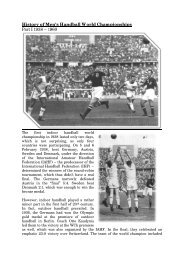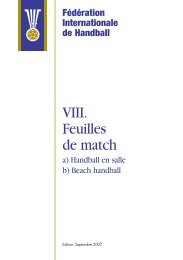Beach handball - IHF
Beach handball - IHF
Beach handball - IHF
You also want an ePaper? Increase the reach of your titles
YUMPU automatically turns print PDFs into web optimized ePapers that Google loves.
The bouncing or dribbling is considered to have started when the player touches the<br />
ball with any part of his body and directs it towards the floor.<br />
After the ball has touched another player or the goal, the player is allowed to tap the<br />
ball or bounce it and catch it again.<br />
7:5 move the ball from one hand into the other one.<br />
7:6 play the ball while kneeling, sitting or lying on the floor.<br />
It is not permitted to:<br />
7.7 touch the ball more than once, unless it has touched the floor, another player, or the<br />
goal in the meantime (13:1a).<br />
Fumbling the ball is not penalized<br />
Comment:<br />
Fumbling means that a player fails to control the ball when trying to catch it or stop<br />
it.<br />
If the ball has already been controlled, then the player may not touch it more than<br />
once after tapping or bouncing it.<br />
7.8 touch the ball with a foot or leg below the knee, except when the ball<br />
has been thrown at the player by an opponent (13:1a-b);<br />
7.9 Play continues if the ball touches a referee on the court.<br />
Passive play<br />
7.10 It is not permitted to keep the ball in the team’s possession without making any<br />
recognizable attempt to attack or to shoot on goal (see Clarification No. 4). This is<br />
regarded as passive play, which is to be penalized with a free-throw against the<br />
team in possession of the ball (13:1a).<br />
The free-throw is taken from the spot where the ball was when play was interrupted.<br />
7.11 When a possible tendency to passive play is recognized, the forewarning signal<br />
(Hand signal No.17) is shown. This gives the team in possession of the ball the<br />
opportunity to change its way of attacking in order to avoid losing possession. If the<br />
way of attacking does not change after the forewarning signal has been shown, or<br />
no shot on goal is taken, then a free-throw is called against the team in possession<br />
(see Clarification No 4).<br />
In certain situations the referees can call free-throw against the team in possession<br />
also without any prior forewarning signal, (e.g. when a player intentionally refrains<br />
from trying to utilize a clear scoring chance).<br />
17


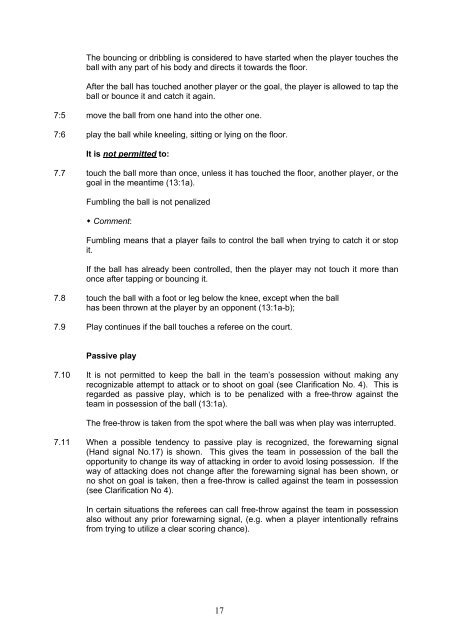

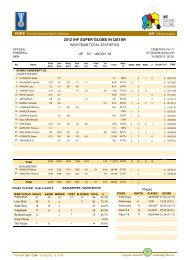

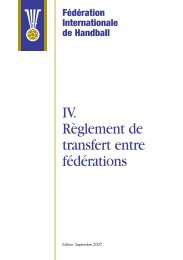
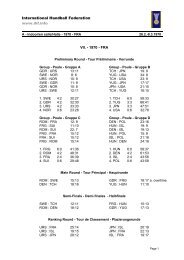
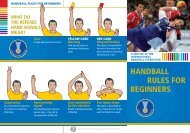
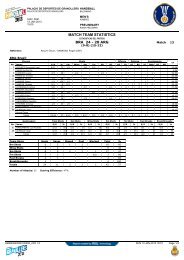

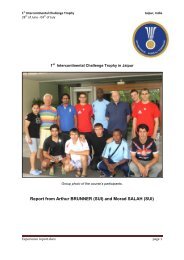
![[IHF- Referee list 2012/2013]](https://img.yumpu.com/18217761/1/184x260/ihf-referee-list-2012-2013.jpg?quality=85)
